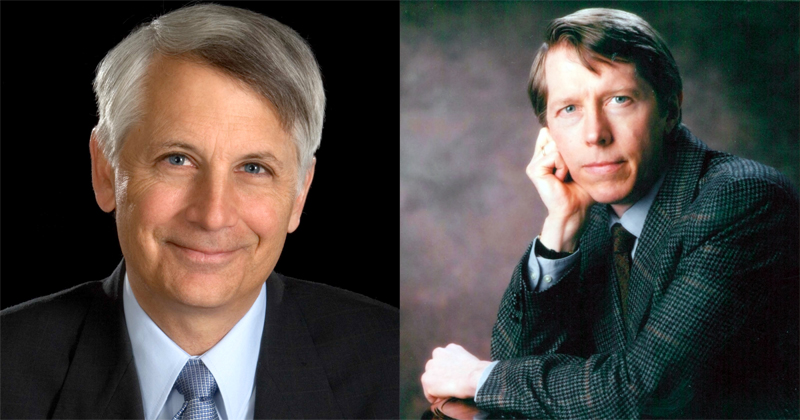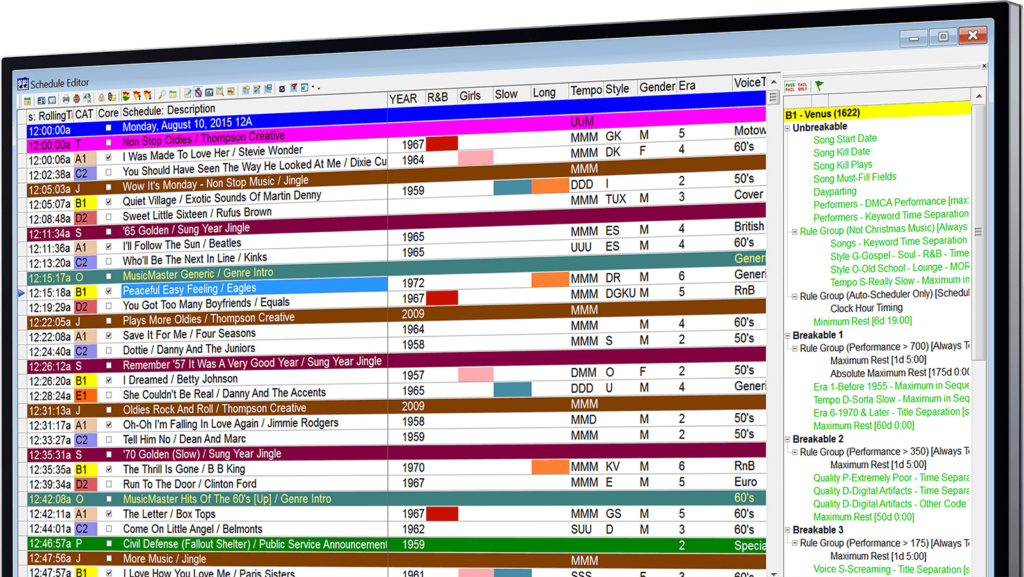In their best-selling book, “Generations: The History of America’s Future,” William Strauss and Neil Howe describe in great detail The Crisis of 2020.

They talk about how the crisis would seemingly come out of nowhere. They talk about how an era of incurable divisiveness and political bickering would suddenly shift to a mood of community solidarity and resolve. They talk about how the crisis would ultimately change America forever.

Strauss and Howe wrote about The Crisis of 2020 in 1991.
“Generations” proposes there are four different types of generations and four different phases of history, with patterns that predictably repeat. Some might argue Strauss and Howe predicted The Crisis of 2020 with such accuracy because it aligns with other crisis eras in American history, such as World War II and The American Revolution.
If it could foretell COVID-19 in 1991, wouldn’t you love to know what “Generations” could teach us about where popular music is heading?
The idea that music is cyclical isn’t new of course. Legendary programmer and consultant Guy Zapoleon has long championed The Music Cycle, observing that Contemporary Hit Radio (CHR) moves through three predictable phases during a decade: Birth/Pop, Extremes, and Doldrums.
But why does music move through these phases?
THE GENERATIONAL MUSIC CYCLE
There is a longer-range cycle that both drives Zapoleon’s music cycle and explains why we never seem to avoid its doldrums. We call it the Generational Music Cycle, and we base it on Strauss and Howe’s generational archetypes theory.
Two factors drive the Generational Music Cycle:
- Which generation is the primary creator of popular music?
- Which generation is the primary consumer of popular music?
Combined, these factors spawn two different music cycles, each of which lasts about a decade and each of which contains the Birth/Pop, Extremes, and Doldrums phases Zapoleon outlines.

Evolution: During this stage, an older generation continues to create the music, but the next younger generation becomes the primary consumer of new music. It is the younger generation’s tastes that shape which songs are hits. While not fundamentally changing what style of music is popular, it does bring new excitement to pop music and shapes new music styles that will emerge in the future. The Evolution stage typically begins when the oldest members of a younger generation turn 21.
Examples of Evolution phase:
- 1964 – The British Invasion: The Beatles storm America to throngs of Boomers who are now the tastemakers, while artists from the previous Silent Generation continue to create the music. Today, this era defines what people think of as “Oldies”.
- 1982 – New Wave: Duran Duran, Men At Work and A Flock of Seagulls videos play on MTV to Gen Xers, while Boomer artists from Michael Jackson to Madonna cater to Gen X tastes. When people think of “80s” music, they think of this era.
- 2003 – Happy Hip Hop: A new breed of feel-good Hip Hop from artists such as Outkast, Black Eyed Peas, 50 Cent and Jay Z emerges, shedding the gritty gang life images of 90s Gen X Hip Hop. Millennial listeners were ready to have fun again. Keep an eye out for nostalgia around this era to emerge.
Revolution: During this next stage, the younger generation that has been shaping music tastes during the past decade also spawns the artists creating contemporary music. Whenever a brand-new style of music seemingly suddenly emerges and becomes the dominant force in popular music, it is almost always at the beginning of the Revolution. The Revolution stage typically begins when the last members of the older generation turn 31 and no longer represent the bulk of popular artists.
Examples of Revolution Phase:
- 1955 – Rock ‘n’ Roll: Bill Haley & The Comet’s “Rock Around The Clock” becomes #1 and, seemingly overnight, James Dean era teenagers dump Patti Page and Perry Como for Elvis Presley, Little Richard, Buddy Holly and Chuck Berry. The Silent Generation has replaced the Greatest Generation as the makers of their own music.
- Early 1970s – Classic Rock: While “Rock” had already emerged with The Doors, Cream and Jefferson Airplane, the early 70s saw what was left of the other 60s styles vanish as Boomer artists Fleetwood Mac, Pink Floyd, The Doobie Brothers and The Eagles define the decade. This era was for Boomers by Boomers.
- 1991 – Grunge: With “Smells Like Teen Spirit,” Rock suddenly transitioned from hedonistic hair bands to dark realism, as those Generation X latch key kids take over creating music from the Boomers and change Rock to reflect their reality. Jeremy spoke in class that day indeed.
- Early 2010s – EDM: The DJ replaced the rock star as the center of popular youth music culture, as Millennial-aged artists such as David Guetta, Diplo, Major Lazer, and Swedish House Mafia drive tastes. Their EDM styles also become infused by millennial pop artists such as Bruno Mars and Justin Bieber and Hip Hop artists such as Drake. Generation X’s influence is over.
“BIRTH” HAPPENS WHEN GENERATIONS AGREE ON THE HITS
Typically, people remember the first four to five years of an Evolution as the “fun” years. From mid-60s “Oldies” to “80s”, they’re the years you hear at wedding receptions and sports events when it’s time to have a good time.
In contrast, the first few years of a Revolution often represent the halcyon days of a genre. The days when the music was pure; Classic Rock from the early- and mid-1970s. Grunge and Hip Hop from the early and mid-90s. Rock ‘n’ Roll before “the day the music died” when a plane crash killed its stars in 1959.
So why don’t the golden years last?
“EXTREMES” AND “DOLDRUMS” OCCUR AT GENERATIONAL TENSION POINTS
In 1979, tens of thousands gather at a baseball double-header sponsored by FM 98 the Loop (WLUP) in Chicago. The promotion? The chance to come destroy Disco records.
They almost destroyed Comiskey Park in the process.
Those disco demolitioners were overwhelmingly 15- to 18-year old teens representing the first wave of Generation X, rebelling against the Boomer-driven dance fad.
Meanwhile in New York, The Talking Heads, Blondie and the Ramones were playing CBGB, hinting at the new wave sounds that would take over Top 40 a few years later.

Welcome to the Extremes.
Both an Evolutionary phase and a Revolutionary phase will ultimately devolve into the Extremes and Doldrums before the next phase begins. Why? Generational transition tension: During the Birth phase, there is agreement among the generations about what’s popular. As a new generation emerges first among consumers and then later among artists, conflict emerges between the aging establishment and the younger generation who want something new.
After a revolution, the “Extremes” phase is most likely to launch fads that appeal to the older generation, but generally don’t have the staying power of the halcyon days of the genre that preceded it. Beyond Disco:
- The early 1960s were rife with musical fads, from the faux folk and hootenanny of The New Christie Minstrels to death discs of teenage tragedy such as “Last Kiss.”
- The late 1990s saw a slew of quirky pop alternative from one-hit wonders from Cherry Poppin’ Daddies and the Squirrel Nut Zippers to Fastball and The Cardigans. How bizarre.
In contrast, the Doldrums’ phase that happens after an Evolution and just before a new Revolution often bring the last gasp for icons of a soon to be irrelevant generation.
- Consider 1988-1990, when Chicago, Don Henley, George Harrison, The Beach Boys and a slew of other Boomer icons had their last major hits.
- Likewise, Red Hot Chili Peppers and Green Day had their last mainstream hits before 2010, while overnight, Nickelback went from a stalwart hit maker to a punchline.
- And while the early 1970s likely remind you of Led Zeppelin, it was also when pre-rock crooners Perry Como and Andy Williams had their last Top 10 hits that didn’t involve Christmas.
2020 AND BEYOND
What does this generations-based music cycle suggest awaits us now?
In 2020, we’re nearing the end of the millennial generation’s Revolution phase. Since the early 2010s, they’ve been the dominant music makers and tastemakers.
But waiting in the wings within the halls of America’s middle schools—or at the moment at home on Google Classroom—are the kids that will soon begin impacting popular music.
In our next post, we’ll introduce you to them.

Pingback: The Question Of Music’s Soul In The Digital Age – Ben Vaughn